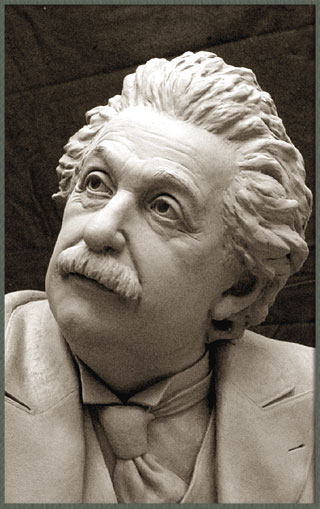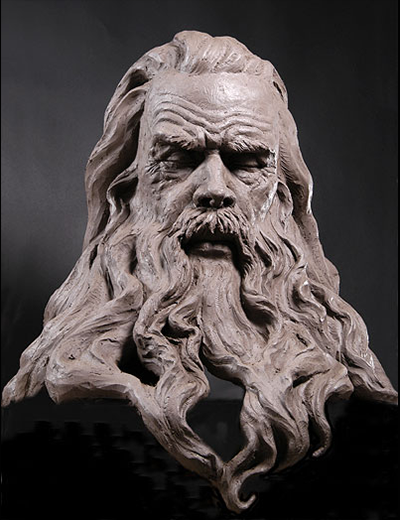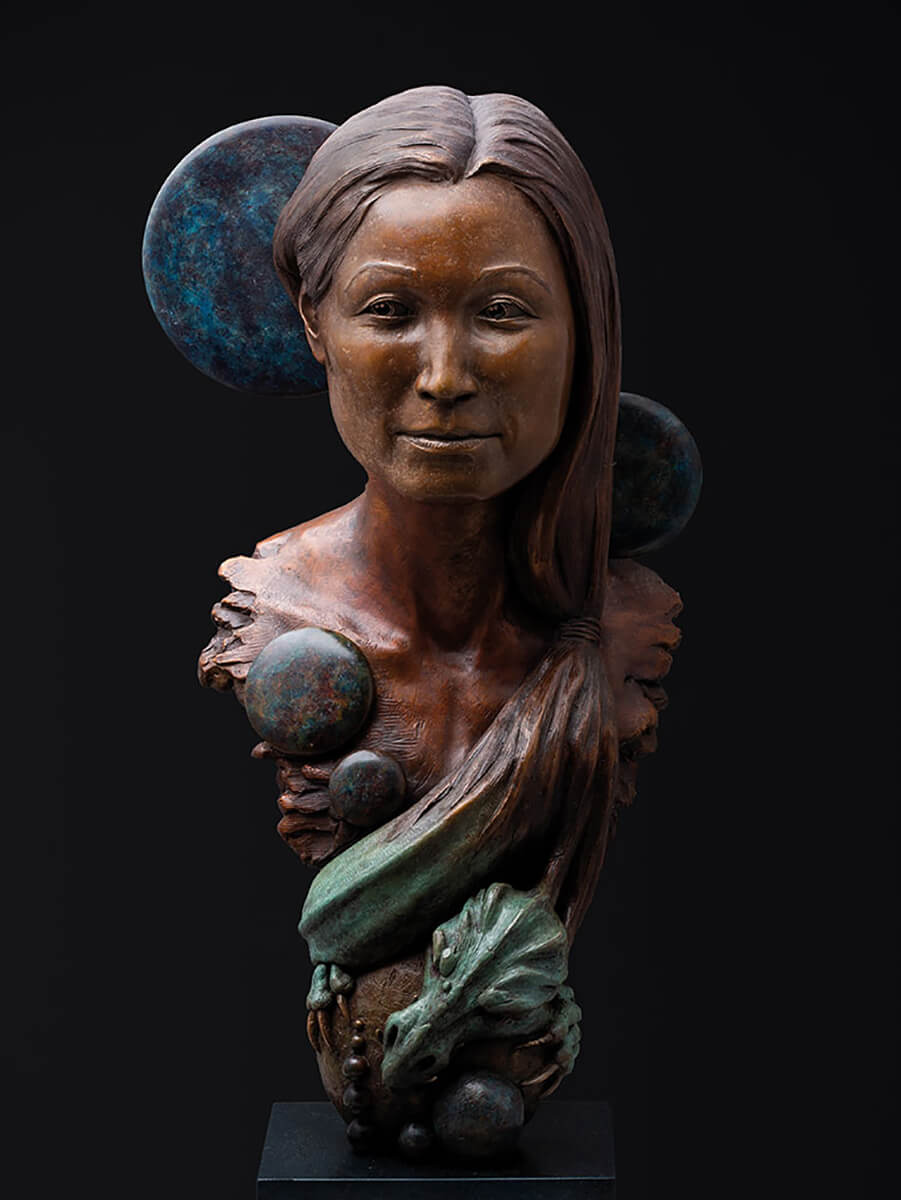Everlasting Charm in Bronze: Introducing the Art of Bronze Sculptures
Wiki Article
The Evolution of Sculptures: From Old to Modern
The Evolution of Sculptures: From Ancient to Modern. Robert C Hitchcock Sculptor.Sculpture, among the oldest forms of art, has been an important part of human civilization for millennia. From the old civilizations of Egypt and Greece to the modern-day period, sculptures have advanced, reflecting adjustments in creative strategies, materials, and social impacts. This trip with time traces the growth of sculptures, discovering the shifts in vogue, subject, and imaginative expression.
Beginning with the ancient globe, sculptures crafted from stone and later on bronze caught the significance of deities, rulers, and daily life. The Renaissance period experienced a revival of classical sculpting techniques, as musicians sought to mimic the elegant forms of old Greek and Roman sculptures (Robert C Hitchcock Sculptor). In the contemporary era, artists challenged standard boundaries, accepting abstraction and trial and error with brand-new products
This expedition will look into the diverse development of sculptures, disclosing the abundant tapestry of imaginative expression across various periods and cultures.

Old Sculptures: From Rock to Bronze
Old sculptures transitioned from being carved out of rock to being cast in bronze. Rock sculptures, while excellent in their own right, were limited by the nature of the product. Equine Sculptures.The introduction of bronze as a tool for sculptures produced a change in artistic expression. Bronze supplied carvers the chance to develop lifelike and intricate types that were not possible with rock. The process of casting bronze permitted the creation of several copies of a sculpture, allowing bigger circulation and conservation of these imaginative masterpieces.
The shift from stone to bronze likewise saw a shift in the topic of sculptures. While stone sculptures mainly portrayed gods, goddesses, and mythological figures, bronze sculptures began to show a wider variety of topics, consisting of daily individuals and pets. This development of topic showcased the versatility and adaptability of the bronze tool.
Renaissance Rebirth: Sculpting in the Classic Style
The Renaissance rebirth of sculpture observed a rebirth in the timeless style, building upon the advancements made throughout the shift from stone to bronze in old sculptures. Throughout this period, artists looked for to recreate the classic aesthetic and ideals of beauty that were widespread in old Greek and Roman sculptures.One of the key features of the Renaissance rebirth was the emphasis on naturalism and the human form. Artists like Donatello and Michelangelo aim to capture the physiological details and expressions of their topics with extraordinary precision. They researched the human body and incorporated their observations right into their sculptures, resulting in natural and practical depictions.
Another vital element of the Renaissance rebirth was the exploration of viewpoint and depth. Artists utilized strategies such as contrapposto, where the weight of the body is changed to one side, producing a sense of motion and dynamism. They additionally try out different materials, consisting of marble and bronze, to achieve a degree of refinement and intricacy in their sculptures.

Innovation and the Avant-Garde: Breaking Standard Boundaries
During the Innovation and Avant-Garde movements, carvers pressed the limits of traditional artistic conventions. This duration, which emerged in the late 19th and very early 20th centuries, saw a significant shift in the method artists approached sculpture. Denying the notion of art as simple replica, modernist carvers sought to explore new kinds, products, and concepts.
One of the crucial qualities of modernist sculpture was the focus on abstraction. Carvers relocated far from reasonable representations and rather concentrated on catching the significance of the topic via streamlined kinds and geometric forms. This separation from traditional representation enabled musicians to express their emotions and ideas in a much more individual and subjective fashion.

Contemporary Sculptures: Checking Out New Materials and Concepts
With an emphasis on discovering brand-new materials and principles, modern sculptures have actually revolutionized the field of art. Artists today are pushing the boundaries of traditional sculpture by using ingenious products and exploring with abstract ideas. These sculptures test traditional concepts of materiality, kind, and definition, welcoming visitors to participate in a new and provocative imaginative experience.Contemporary carvers are accepting a variety of materials, consisting of plastic, glass, steel, and even organic matter. They are not restricted to the standard medium of stone or clay, permitting better liberty of expression and testing. This change towards non-traditional materials has opened up brand-new opportunities for artists to produce sculptures that are vibrant, interactive, and visually striking.
In addition to exploring brand-new materials, contemporary sculptures additionally explore complicated and abstract concepts. Musicians are now exploring motifs such as identity, social issues, and the environment, using sculpture as an effective medium for social discourse and self-contemplation. These sculptures challenge audiences to think seriously and engage with art on a much deeper level, stimulating discussions and prompting psychological responses.
International Influences: Sculptural Customs From All Over The World
Sculptural traditions from different areas of the world have actually considerably formed the development of sculptures throughout background. The worldwide impacts on sculpture have been varied and have added to the richness and selection of artistic expressions. From the old civilizations of Egypt, Greece, and Rome to the complex carvings of Eastern societies, each region has actually developed its distinct sculptural customs that have actually influenced artists throughout time.In ancient Egypt, sculptures were produced primarily for funerary and religious functions. The legendary sculptures of pharaohs and gods, such as the Great Sphinx and the bust of Queen Nefertiti, display the Egyptians' mastery of rock carving and their belief in the afterlife.

In old Rome, sculpture offered both creative and political objectives. Roman sculptures typically shown emperors, generals, and mythological click reference figures, showing the power and splendour of the realm. The marble statue of Augustus of Prima Porta and the monumental Arch of Constantine are significant instances of Roman sculptural achievements.
Asian sculptural practices, particularly in India, China, and Japan, have likewise had a profound influence on the advancement of sculptures. Indian sculptures, such as the intricately sculpted holy places of Khajuraho and the enormous statues of Buddha, exhibit a rich blend of religious, mythological, and architectural elements. Chinese sculptures, characterized by their fine craftsmanship and attention to detail, usually represent divine beings, pets, and fabulous numbers. Japanese sculptures, influenced by Buddhism, highlight simpleness and harmony, seen in the tranquil sculptures of Buddha and the sophisticated art of bonsai.
The worldwide influences on sculpture proceed to develop in the modern-day age. As we look to the future, it is particular that the global impacts on sculpture will proceed to shape and redefine this old art form.
Verdict
In conclusion, the evolution of sculptures has actually seen a change from ancient rock and bronze works to the timeless resurgence during the Renaissance. This was followed by the splitting of traditional limits through modernism and the progressive movement. Today, contemporary sculptures discover new products and principles, while also attracting inspiration from worldwide sculptural practices. The journey of sculptures mirrors the ever-changing artistic expressions and cultural impacts throughout history.From the ancient human beings of Egypt and Greece to the modern era, sculptures have advanced, reflecting changes in imaginative techniques, materials, and social impacts.Starting with the old world, sculptures crafted from stone and later bronze caught the essence of divine beings, leaders, and day-to-day life.Ancient sculptures transitioned from being sculpted out of rock to being cast in bronze. While rock sculptures predominantly portrayed gods, goddesses, and mythological figures, bronze sculptures started to reflect a wider variety of subjects, consisting of day-to-day individuals and animals.In final thought, the advancement of sculptures has actually seen a change from ancient rock and bronze functions to the timeless revival during the Renaissance.
Report this wiki page